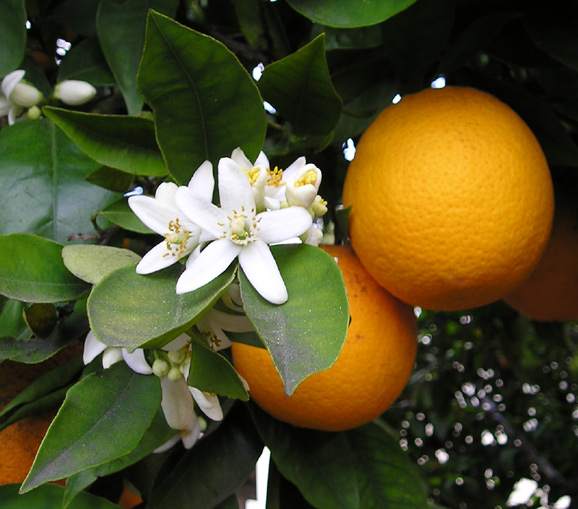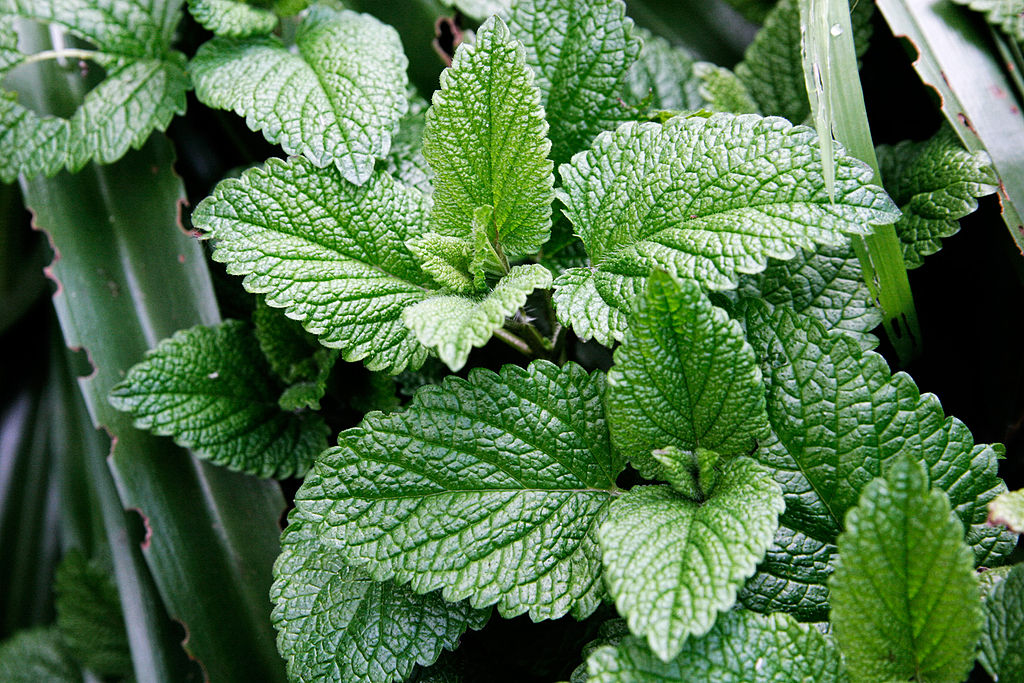Orange vs. Mint
Nutrition comparison of Orange and Mint
Ever wonder how your favorite foods stack up against each other in terms of nutrition?
We compared the nutritional contents of
orange
versus
mint
(100g each)
below using 2020 USDA and NIH data[1].
For a quick recap of significant nutrients and differences in orange and mint:
- Both orange and mint are high in Vitamin C, calcium and dietary fiber.
- Mint has more riboflavin, niacin, Vitamin B6 and folate.
- Mint is an excellent source of Vitamin A, iron and potassium.
USDA sources for nutritional information: Orange (Oranges, raw, Florida) and Mint (Peppermint, fresh) . Have a correction or suggestions? Shoot us an email.
Calories and Carbs
calories
Orange has 34% less calories than mint - orange has 46 calories per 100 grams and mint has 70 calories.
| Orange | Mint | |
|---|---|---|
| Protein | 6% | ~ |
| Carbohydrates | 91% | ~ |
| Fat | 4% | ~ |
| Alcohol | ~ | ~ |
carbohydrates
Orange and mint contain similar amounts of carbs - orange has 11.5g of total carbs per 100 grams and mint has 14.9g of carbohydrates.
dietary fiber
Both orange and mint are high in dietary fiber. Mint has 233% more dietary fiber than orange - orange has 2.4g of dietary fiber per 100 grams and mint has 8g of dietary fiber.
sugar
Mint has less sugar than orange - orange has 9.1g of sugar per 100 grams and mint does not contain significant amounts.
Protein
protein
Mint has 436% more protein than orange - orange has 0.7g of protein per 100 grams and mint has 3.8g of protein.
Fat
saturated fat
Both orange and mint are low in saturated fat - orange has 0.03g of saturated fat per 100 grams and mint has 0.25g of saturated fat.
Vitamins
Vitamin C
Both orange and mint are high in Vitamin C. Orange has 42% more Vitamin C than mint - orange has 45mg of Vitamin C per 100 grams and mint has 31.8mg of Vitamin C.
Vitamin A
Mint is an excellent source of Vitamin A and it has 18 times more Vitamin A than orange - orange has 11ug of Vitamin A per 100 grams and mint has 212ug of Vitamin A.
Vitamin E
Orange and mint contain similar amounts of Vitamin E - orange has 0.18mg of Vitamin E per 100 grams and mint does not contain significant amounts.
The B Vitamins
Mint has more riboflavin, niacin, Vitamin B6 and folate. Both orange and mint contain significant amounts of thiamin and pantothenic acid.
| Orange | Mint | |
|---|---|---|
| Thiamin | 0.1 MG | 0.082 MG |
| Riboflavin | 0.04 MG | 0.266 MG |
| Niacin | 0.4 MG | 1.706 MG |
| Pantothenic acid | 0.25 MG | 0.338 MG |
| Vitamin B6 | 0.051 MG | 0.129 MG |
| Folate | 17 UG | 114 UG |
Minerals
calcium
Both orange and mint are high in calcium. Mint has 465% more calcium than orange - orange has 43mg of calcium per 100 grams and mint has 243mg of calcium.
iron
Mint is an excellent source of iron and it has 55 times more iron than orange - orange has 0.09mg of iron per 100 grams and mint has 5.1mg of iron.
potassium
Mint is an excellent source of potassium and it has 237% more potassium than orange - orange has 169mg of potassium per 100 grams and mint has 569mg of potassium.
Omega-3 and Omega-6
omega 3s
For omega-3 fatty acids, mint has more alpha linoleic acid (ALA) than orange per 100 grams.
| Orange | Mint | |
|---|---|---|
| alpha linoleic acid | 0.011 G | 0.435 G |
| Total | 0.011 G | 0.435 G |
omega 6s
Comparing omega-6 fatty acids, mint has more linoleic acid than orange per 100 grams.
| Orange | Mint | |
|---|---|---|
| linoleic acid | 0.031 G | 0.069 G |
| Total | 0.031 G | 0.069 G |
Customize your serving size
The comparison below is by common portions, e.g. cups, packages. You can also see a more concrete comparison by weight at equal weight (by grams) comparison.
Orange g
()
|
Daily Values (%) |
Mint g
()
|
|||||
|---|---|---|---|---|---|---|---|
| KCAL % |
|
5% | calories | 5% |
|
KCAL % | |
| G % |
|
5% | carbohydrates | 5% |
|
G % | |
| G % |
|
5% | dietary fiber | 5% |
|
G % | |
| G | 5% | sugar | 5% | G | |||
| G % |
|
5% | total fat | 5% |
|
G % | |
| G % |
|
5% | saturated fat | 5% |
|
G % | |
| G | 5% | monounsaturated fat | 5% | G | |||
| G | 5% | polyunsaturated fat | 5% | G | |||
| G | 5% | trans fat | 5% | G | |||
| MG | 5% | cholesterol | 5% | MG | |||
| MG % |
|
5% | sodium | 5% |
|
MG % | |
| 5% | Vitamins and Minerals | 5% | |||||
| UG % |
|
5% | Vitamin A | 5% |
|
UG % | |
| MG % |
|
5% | Vitamin C | 5% |
|
MG % | |
| IU % |
|
5% | Vitamin D | 5% |
|
IU % | |
| MG % |
|
5% | calcium | 5% |
|
MG % | |
| MG % |
|
5% | iron | 5% |
|
MG % | |
| MG % |
|
5% | magnesium | 5% |
|
MG % | |
| MG % |
|
5% | potassium | 5% |
|
MG % | |
| MG % |
|
5% | thiamin (Vit B1) | 5% |
|
MG % | |
| MG % |
|
5% | riboflavin (Vit B2) | 5% |
|
MG % | |
| MG % |
|
5% | niacin (Vit B3) | 5% |
|
MG % | |
| MG % |
|
5% | Vitamin B6 | 5% |
|
MG % | |
| MG % |
|
5% | pantothenic acid (Vit B5) | 5% |
|
MG % | |
| UG % |
|
5% | folate (Vit B9) | 5% |
|
UG % | |
| UG % |
|
5% | Vitamin B12 | 5% |
|
UG % | |
| MG % |
|
5% | Vitamin E | 5% |
|
MG % | |
| UG % |
|
5% | Vitamin K | 5% |
|
UG % | |
| G % |
|
5% | protein | 5% |
|
G % | |
| UG % |
|
5% | biotin (Vit B7) | 5% |
|
UG % | |
| MG % |
|
5% | choline | 5% |
|
MG % | |
| MG % |
|
5% | chlorine | 5% |
|
MG % | |
| UG % |
|
5% | chromium | 5% |
|
UG % | |
| MG % |
|
5% | copper | 5% |
|
MG % | |
| UG % |
|
5% | fluoride | 5% |
|
UG % | |
| UG % |
|
5% | iodine | 5% |
|
UG % | |
| MG % |
|
5% | manganese | 5% |
|
MG % | |
| UG % |
|
5% | molybdenum | 5% |
|
UG % | |
| MG % |
|
5% | phosphorus | 5% |
|
MG % | |
| UG % |
|
5% | selenium | 5% |
|
UG % | |
| MG % |
|
5% | zinc | 5% |
|
MG % | |
| G | 5% | Water | 5% | G | |||
| G | 5% | Starch | 5% | G | |||
| G | 5% | Alcohol | 5% | G | |||
FAQ
Does orange or mint contain more calories in 100 grams?Orange has 30% less calories than mint - orange has 46 calories in 100g and mint has 70 calories.
Does orange or mint have more carbohydrates?
By weight, orange and mint contain similar amounts of carbs - orange has 11.5g of carbs for 100g and mint has 14.9g of carbohydrates.
Does orange or mint contain more calcium?
Both orange and mint are high in calcium. Mint has 470% more calcium than orange - orange has 43mg of calcium in 100 grams and mint has 243mg of calcium.
Does orange or mint contain more iron?
Mint is an abundant source of iron and it has 55 times more iron than orange - orange has 0.09mg of iron in 100 grams and mint has 5.1mg of iron.
Does orange or mint contain more potassium?
Mint is a rich source of potassium and it has 240% more potassium than orange - orange has 169mg of potassium in 100 grams and mint has 569mg of potassium.

